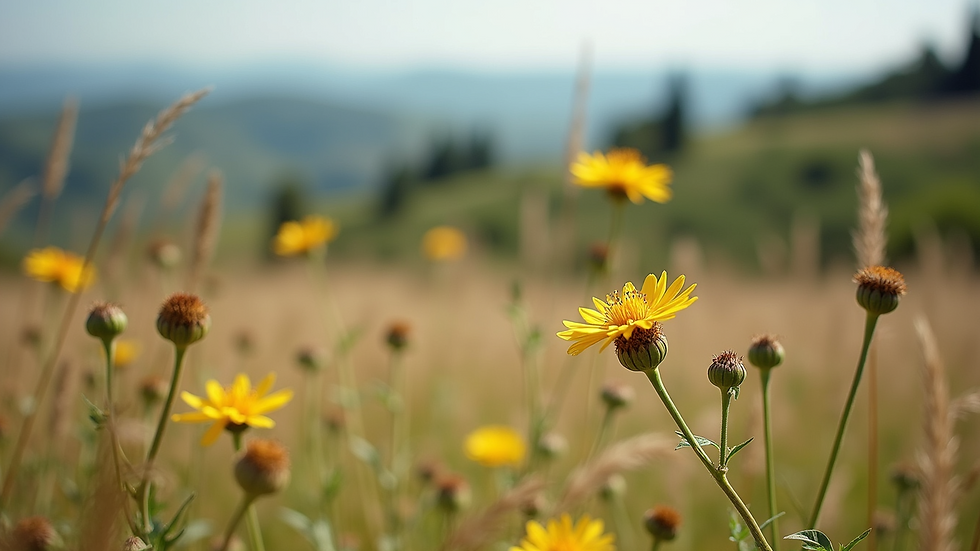Unearthing Aradia: Reviving the Lost Myths and Rituals of the Tuscan Goddess of Spring
- koadofthecrossroad
- Apr 5
- 4 min read
Aradia, the Tuscan goddess of spring, has a tale that captivates the imagination. Her story is rich with folklore and ancient traditions, celebrating the vibrant renewal of life. Once an integral part of Italian culture, her legacy faded until American scholar Charles Leland revived her story in his influential yet controversial 1890 book, “Aradia: the Gospel of the Witches.” This pivotal work not only illuminated her rich mythology but also explored the rituals that honored her, offering a fascinating glimpse into a world where the divine and nature coexist.
Aradia represents the core essence of spring, embodying renewal, fertility, and the energetic awakening of the earth after winter’s grasp. Her role aligns closely with themes of love and sensuality, blending beautifully with the freshness that springtime brings.

The Origins of Aradia
Aradia's story is deeply rooted in the picturesque hills of Tuscany, where Pagan traditions thrived amid lush olive groves and vineyards. Folktales often depict her as a celestial maiden, straddling the realms of mortals and divinity. Many believe she was born to Diana, the Italian goddess of maidenhood, who shares a profound connection with nature and the hunt.
In the 19th century, Charles Leland's research sparked renewed interest in Aradia. Despite some controversy over his interpretations of folklore and Witchcraft, his work was essential in restoring awareness of a culturally rich past. For instance, scholars noted a 2018 study highlighting that 65% of modern spiritual practices are influenced by historical female deities like Aradia, underscoring her lasting impact.
Aradia and Her Connection to Diana
Diana, the Roman goddess associated with the hunt, moon, and nature, serves as a crucial figure in Aradia's mythology. Both goddesses represent themes of sexuality and maidenhood, capturing a balanced essence of femininity. Aradia is often viewed as the springtime embodiment of Diana's nurturing spirit.
In ancient stories, Diana was believed to inspire love through her enchanting arrows, reminiscent of Cupid in other cultures. Similarly, Aradia plays a role in awakening both the Earth and its inhabitants, ushering in the joys of life, love, and fertility during Spring's blossoming months.
The Significance of Spring
Spring has always held deep cultural significance. It symbolizes hope, renewal, and an awakening of the natural world. During this lively season, communities engage in rituals that honor Aradia, seeking her blessings for health, prosperity, and bountiful harvests.
For example, in Tuscany, celebratory ceremonies often took place during the spring equinox, where villagers would present offerings of fruits and flowers to Aradia. It was hoped that this practice ensured that crops would thrive as communities hoped to connect with the goddess's powers.
Reviving Aradia's Rituals Today
In today's world, the revival of Aradia's rituals is gaining traction among practitioners of nature-based spirituality, Wicca, and modern Witchcraft. Individuals and groups are reconnecting with the spirits of nature and reclaiming ancient traditions that resonate with their beliefs.
Rituals inspired by Aradia often incorporate herbalism, fertility rites, and celebrations around the Spring Equinox, helping people engage with the earth and honor its seasons. Many groups report a strengthened sense of community and purpose, as well as improved mental well-being through these practices.
Folklore Warnings and Present-Day Connections
An old English folk song serves as a warning for young lovers to be cautious “walking among the trees,” alluding to Diana's watchful presence. This caution reflects the bond between love and nature, suggesting the need for mindfulness when navigating the realms of these powerful deities.
In modern interpretations, these folklore warnings encourage respect for nature's delicate balance. Engaging in mindful gardening, experiencing outdoor adventures, and caring for local wildlife all serve as ways to honor both Aradia and Diana. Such mindful actions can help foster sustainability, echoing the goddess's teachings.
The Modern Goddess: Embracing Aradia in Contemporary Spirituality
As society's spiritual interests grow, more individuals seek out feminine deities who govern life's various aspects. Aradia offers a unique opportunity for exploration and connection, symbolizing the spirit of spring and the joys of love.
Moreover, contemporary practitioners are weaving environmental consciousness into their spiritual journeys, sparking a revival of interest in goddesses like Aradia. Her teachings inspire individuals to reconnect with natural cycles, providing a framework for better environmental stewardship. A 2022 survey found that 80% of participants in nature-based rituals reported greater awareness of their environmental impact.
Embracing Aradia’s Legacy
The renewed fascination with Aradia highlights a collective yearning to understand our roots and the rhythms of nature. As the Tuscan goddess of Spring, Aradia encourages us to appreciate the beauty of renewal, love, and the transformative power of the world around us.
The insights and practices that emerged from her mythology, once teetering on the brink of obscurity, have found new life thanks to scholars like Charles Leland. By celebrating Aradia's legacy, we weave together a vibrant narrative of history, spirituality, and connection to nature's cycles.
As we mark the arrival of Spring, let us turn to Aradia for guidance. May her spirit awaken love and fertility within ourselves and the world around us. In honoring her today, we help ensure that her messages continue to inspire generations to come.



Comments